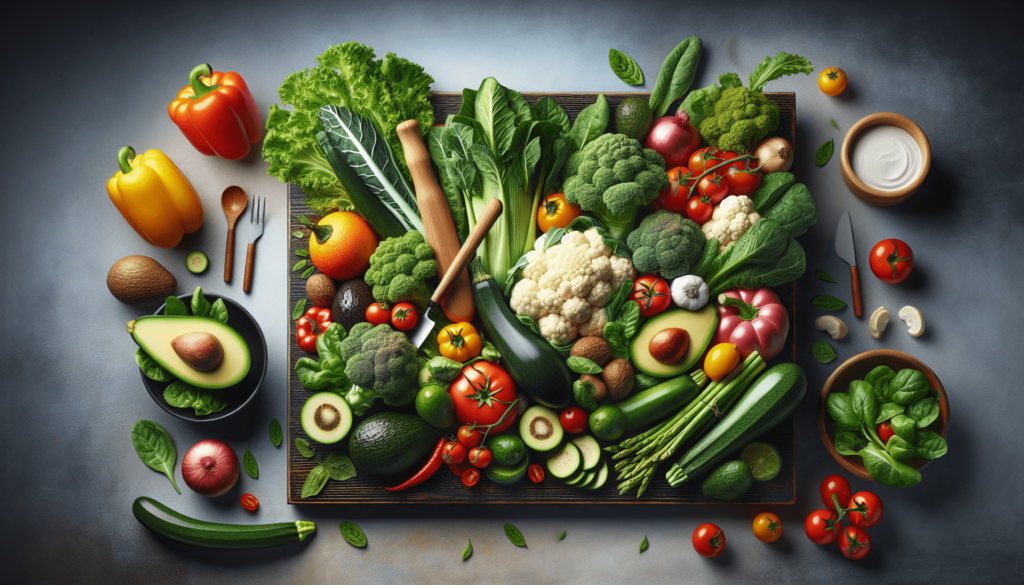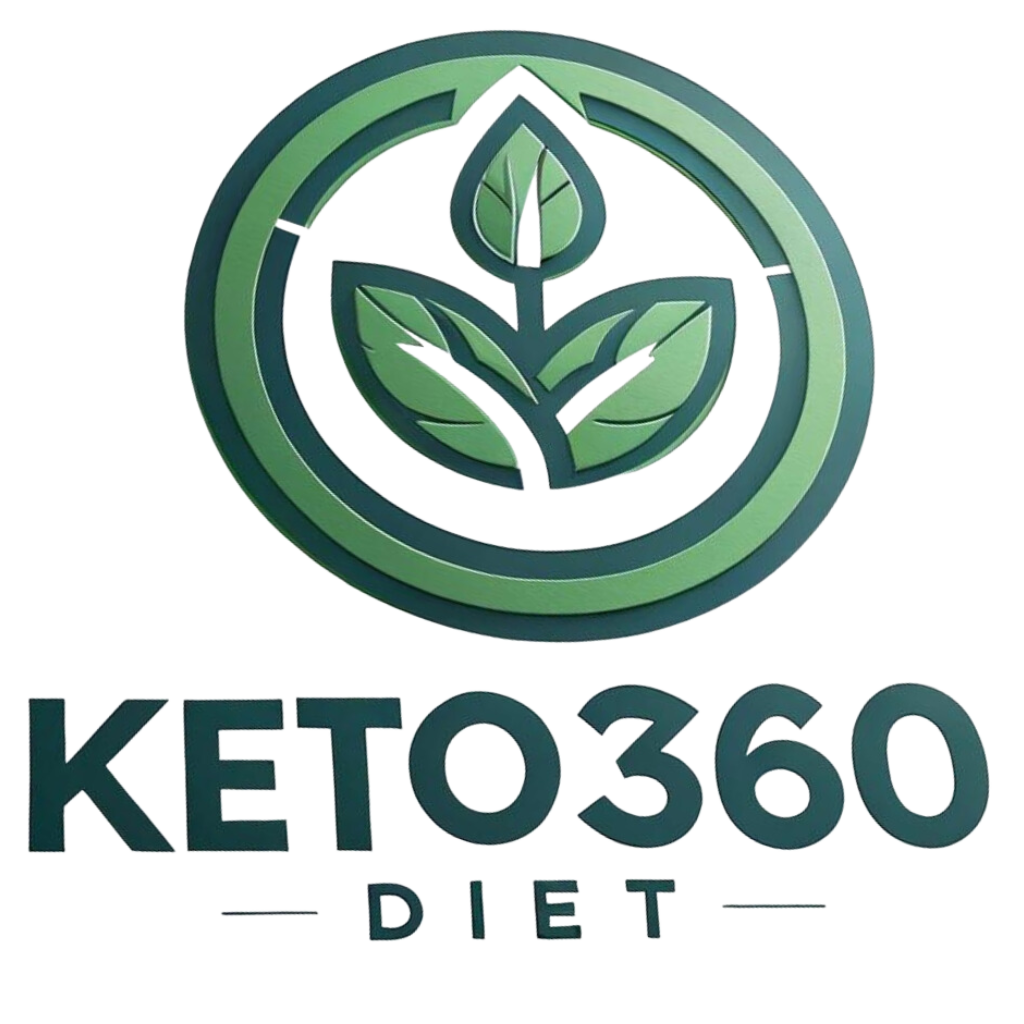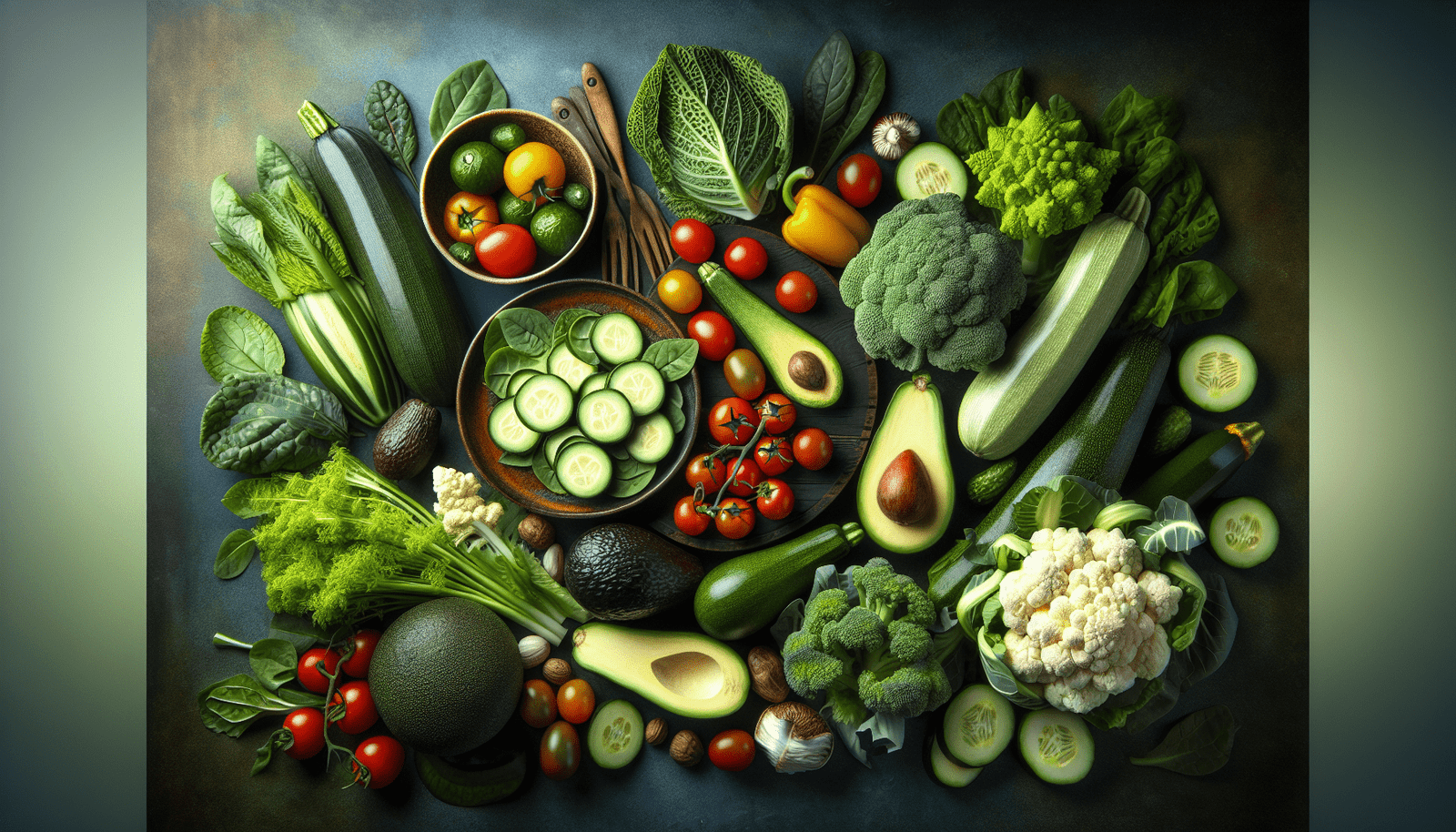Are you curious about the ketogenic diet but not sure where to start? Look no further! In “The Beginner’s Guide to Cooking with Keto-friendly Ingredients,” you’ll discover the essential tips and tricks for incorporating keto-friendly ingredients into your meals. Whether you’re a seasoned chef or a novice in the kitchen, this article will provide you with the knowledge and inspiration to create delicious and healthy dishes that align with the principles of the ketogenic diet. Get ready to embark on a flavor-filled journey that will leave your taste buds satisfied and your body fuelled with the goodness it deserves.

What is the Keto Diet?
The Keto Diet, short for Ketogenic Diet, is a low-carb, high-fat diet that has been gaining popularity in recent years. The main principle of this diet is to reduce your intake of carbohydrates and increase your consumption of fats. By significantly reducing your carb intake, your body is forced to enter a metabolic state called ketosis, where it begins to burn fats for energy instead of carbohydrates. This shift in fuel source can lead to weight loss and other health benefits.
Essential Keto-friendly Ingredients
When following the Keto Diet, it is important to choose ingredients that are low in carbs and high in healthy fats. Here are some essential keto-friendly ingredients that you should have in your pantry:
Healthy Fats
Healthy fats are a cornerstone of the keto diet. Look for sources such as avocados, nuts and seeds, olive oil, coconut oil, and butter. These fats will not only provide flavor and satiety in your meals but also help keep you in a state of ketosis.
Protein Sources
Although the Keto Diet is focused on fats, it is important to include adequate protein in your meals as well. Opt for protein sources like eggs, chicken, beef, fish, and tofu. These will help you meet your protein needs while keeping your carb intake low.
Low-carb Vegetables
Vegetables are an essential part of any healthy diet, and the Keto Diet is no exception. Choose low-carb vegetables such as spinach, kale, broccoli, cauliflower, bell peppers, and zucchini. These veggies are not only low in carbs but also packed with vitamins and minerals.
Dairy Products
Dairy products can be a great source of healthy fats and protein on the keto diet. Opt for full-fat options like cheese, yogurt, and heavy cream. Just be mindful of the carb content, as some dairy products can contain small amounts of lactose.
Condiments and Spices
To add flavor to your keto-friendly meals, stock up on condiments and spices that are low in carbs. Some great options include mayonnaise, mustard, apple cider vinegar, lemon juice, herbs, and spices. These will help you elevate the taste of your dishes without adding unnecessary carbs.
Meal Planning on the Keto Diet
Meal planning is a key aspect of successfully following the Keto Diet. It helps you stay on track and ensures that you have all the necessary ingredients on hand. Here are some steps to help you plan your keto meals effectively:
Calculating Macronutrient Ratios
Before you can start meal planning, it is important to determine your macronutrient ratios. The typical macronutrient breakdown for the Keto Diet is approximately 70-75% fat, 20-25% protein, and 5-10% carbohydrates. Use an online calculator or consult with a nutritionist to determine the right ratios for your specific needs.
Creating a Shopping List
Once you know your macronutrient ratios, create a shopping list based on the keto-friendly ingredients mentioned earlier. Include items like healthy fats, protein sources, low-carb vegetables, dairy products, and condiments and spices. Having a detailed shopping list will prevent you from making impulse purchases or forgetting essential ingredients.
Preparing Weekly Meal Plans
Take some time each week to plan your meals in advance. Decide what breakfast, lunch, dinner, and snacks you will have for the week. Make sure your meals are well-balanced and meet your macronutrient ratios. This will save you time and ensure that you are consistently following the keto diet without resorting to unhealthy options.
Cooking Methods for Keto-friendly Ingredients
When it comes to cooking with keto-friendly ingredients, there are several methods that you can employ. Here are some cooking methods that are particularly well-suited for keto cooking:
Grilling
Grilling is a great way to cook meats and vegetables while adding a smoky flavor. It allows the excess fat to drain away from the food, making it a healthy cooking method for the keto diet. Invest in a good grill or use your stovetop grill pan to enjoy delicious and keto-friendly grilled meals.
Sautéing
Sautéing is a quick and easy cooking method that works well with keto-friendly ingredients. Heat a bit of oil or butter in a skillet, add your proteins or vegetables, and cook them until they are tender and lightly browned. This method helps retain the natural flavors of the ingredients while adding a touch of richness.
Baking
Baking is a versatile cooking method that can be used to prepare a wide variety of keto-friendly recipes. Whether you’re making casseroles, quiches, or baked goods, baking allows for even cooking and helps intensify flavors. Use almond flour and coconut flour as a substitute for regular flour to keep your recipes low in carbs.
Slow Cooking
Slow cooking is a great option for those who prefer minimal effort in the kitchen. This method involves cooking ingredients at a low temperature for an extended period, resulting in tender and flavorful dishes. Invest in a slow cooker and experiment with keto-friendly recipes like pulled pork, soups, and stews.

Substituting Ingredients in Keto Recipes
Sometimes, you may come across a keto recipe that calls for ingredients that are not suitable for your dietary needs. However, with a little creativity, you can easily substitute these ingredients with keto-friendly alternatives. Here are some common substitutions to keep in mind:
Replacing Flour and Grains
Regular flour and grains are high in carbs and not suitable for the keto diet. Instead, use almond flour, coconut flour, flaxseed meal, or psyllium husk powder as a substitute. These alternatives are low in carbs and provide a similar texture in baked goods and breading.
Using Sugar Alternatives
Traditional sugar is not allowed on the keto diet. Instead, opt for sugar alternatives like stevia, erythritol, or monk fruit. These sweeteners have little to no impact on blood sugar levels and can be used in a variety of keto-friendly recipes.
Substituting High-carb Foods
If a recipe calls for high-carb ingredients like pasta or rice, consider substituting them with low-carb alternatives. Zucchini noodles, cauliflower rice, or shirataki noodles are excellent replacements that can mimic the texture and taste of traditional carbs while keeping your meals keto-friendly.
Easy Keto-friendly Recipes for Beginners
If you’re new to the keto diet, it can be challenging to come up with meal ideas that fit your dietary restrictions. Here are some easy and delicious keto-friendly recipes to get you started:
Simple Keto Breakfast Ideas
- Scrambled eggs with bacon and avocado slices.
- Greek yogurt topped with berries and chopped nuts.
- Keto-friendly smoothie made with almond milk, spinach, avocado, and protein powder.
Quick and Delicious Lunch Recipes
- Spinach salad with grilled chicken, cherry tomatoes, feta cheese, and olive oil dressing.
- Lettuce wraps filled with tuna salad, cucumber, and avocado.
- Cauliflower fried rice with shrimp, eggs, and a mix of low-carb vegetables.
Flavorful Dinner Options
- Baked salmon with lemon butter sauce and roasted asparagus.
- Pan-seared steak with garlic butter mushrooms and a side of steamed broccoli.
- Chicken stir-fry with peppers, onions, and a soy sauce substitute made from coconut aminos.
Satisfying Keto Snacks
- Hard-boiled eggs.
- Cheese sticks or cubes.
- Celery sticks with almond butter.
Understanding Net Carbs and Counting Macros
When following the Keto Diet, it is crucial to understand the concept of net carbs and track your macronutrient intake. Here’s what you need to know:
What are Net Carbs?
Net carbs are calculated by subtracting the grams of fiber and sugar alcohols from the total grams of carbohydrates. Fiber and sugar alcohols have little to no impact on blood sugar levels, so they are typically not counted in the total carb intake on the keto diet. By focusing on net carbs, you can make more informed choices about which foods to include in your diet.
Importance of Counting Macros
Counting macros, short for macronutrients, is essential on the keto diet to ensure you are consuming the right balance of fats, proteins, and carbs to maintain ketosis. By tracking your macronutrient intake, you can make adjustments as needed to achieve your desired results, whether it be weight loss, improved energy levels, or better overall health.
Tracking Macros Using Apps
There are several apps available that can make tracking your macros and net carbs easier. These apps allow you to input your meals and snacks, and they calculate your macros and net carbs for you. Some popular options include MyFitnessPal, Carb Manager, and Cronometer. Use these apps as a tool to stay on top of your daily intake and stay consistent with the keto diet.
Tips for Success in Cooking with Keto-friendly Ingredients
Cooking with keto-friendly ingredients can be a fun and rewarding experience. Here are some tips to help you succeed in the kitchen:
Stocking a Keto-friendly Pantry
Ensure your pantry is stocked with essential keto-friendly ingredients mentioned earlier. Having these ingredients on hand will make it easier for you to prepare meals without having to run to the store every time.
Planning and Prepping in Advance
Take some time each week to plan your meals and do some meal prepping. This will save you time and ensure that you have healthy and keto-friendly options readily available. Preparing ingredients in advance can also make cooking during busy weekdays more manageable.
Experimenting with Flavors and Textures
Don’t be afraid to experiment with flavors and textures in your keto-friendly recipes. Try using different herbs, spices, and seasonings to enhance the taste. Incorporate a variety of cooking methods to create different textures and add depth to your dishes.
Staying Consistent
Consistency is key when following the keto diet. Stick to your meal plans and track your macros to ensure you are consistently in ketosis. Remember, it takes time for your body to adapt to burning fats for fuel, so don’t get discouraged if you don’t see immediate results.
Dealing with Challenges and Common Mistakes
While the keto diet has many benefits, there can be some challenges and common mistakes that beginners encounter. Here are some tips to help you overcome them:
Overcoming Carb Cravings
Carb cravings can be tough to overcome, especially in the beginning. To combat cravings, make sure you are consuming enough healthy fats and protein in your meals. Drink plenty of water and keep healthy keto-friendly snacks on hand, like nuts or cheese, to help satisfy cravings while staying on track.
Avoiding Common Pitfalls
Common pitfalls on the keto diet include consuming hidden carbs, not getting enough electrolytes, and not consuming enough fiber. Read labels carefully, supplement with electrolytes if needed, and ensure you are including plenty of low-carb vegetables in your meals to avoid these pitfalls.
Addressing Side Effects
Some people may experience side effects when starting the keto diet, such as the keto flu, which can include symptoms like fatigue, headaches, and irritability. These side effects are temporary and can be minimized by staying properly hydrated, consuming enough electrolytes, and gradually reducing your carb intake instead of making drastic changes overnight.
Resources and Further Reading
If you’re looking for more information on the keto diet and cooking with keto-friendly ingredients, here are some resources and further reading materials to explore:
Recommended Keto Cookbooks
- “The Keto Diet Cookbook” by Leanne Vogel
- “Keto Comfort Foods” by Maria Emmerich
- “The Easy 5-Ingredient Ketogenic Diet Cookbook” by Jen Fisch
Online Communities and Websites
- r/keto – Reddit community dedicated to the keto diet, where you can find support, tips, and recipe ideas.
- Diet Doctor – A website that provides comprehensive information on the keto diet, including recipes and meal plans.
- KetoConnect – A popular YouTube channel and website that offers a wide range of keto recipes and resources.
Scientific Research on the Keto Diet
- “A Low-Carbohydrate, Ketogenic Diet versus a Low-Fat Diet To Treat Obesity and Hyperlipidemia” – A study published in the New England Journal of Medicine comparing the effects of a low-carb, ketogenic diet to a low-fat diet on weight loss and blood lipid levels.
- “Effects of a Ketogenic Diet on Body Composition and Strength in Trained Women” – A study published in the Journal of Strength and Conditioning Research examining the effects of a ketogenic diet on body composition and strength in trained women.
By understanding the principles and benefits of the keto diet, stocking your pantry with essential keto-friendly ingredients, mastering various cooking methods, and substituting high-carb ingredients, you can embark on a successful journey of cooking with keto-friendly ingredients. With proper meal planning, tracking your macros, and staying consistent, you can enjoy delicious and nutritious meals while reaping the health benefits of the keto diet. Remember to address any challenges or side effects that may arise and utilize the available resources and further reading materials to enhance your knowledge and understanding of the keto diet.

